How to Use Colored Stain on Wood for Accents

Here’s how to use colored stain on a wood cabinet (table, sign, etc) to add a fun, interesting pattern. It’s a great quick + easy makeover!
It’s quick and easy — provided you learn from my mistake!
We’re friends, right? ‘Cause I’m counting on you NOT judging me when you see this before picture!
It’s embarrassing. I admit it.
This cabinet needed some love just like the rest of the house. Living on a lake translates to living outdoors and I am putting every last corner of our outdoor living spaces to work.
This cabinet’s little corner of residence is getting some style, so it needs some too!
It’s a Cabinet Makeover Using Colored Wood Stain:
When I start a project, I usually like to have a concept drawing.
It can be a doodle on the back of a stray receipt in my purse, a loose drawing in my sketchbook, a more measured drawing on graph paper or; as this one, a mock up in Canva.
Scroll back up and plant that before in your head, then the mock up and now . . . .
So How Did I Use Colored Stains On My Wood Cabinet Her Makeover?
Supplies:
- Sand Paper
- Tack Cloth
- Painters Tape (I used Frog Tape)
- Colored Stain (I used Cabot)
- Ruler
- Pencil
- Screwdriver
- Small Zipper Bag (for the hardware)
- New Door Knobs/Handles, optional
Step 1) Sand and Wipe Clean
As with all staining and painting projects, start with your surface prep.
In this case a very light sanding. I wanted to preserve the old character and just remove any “yuck” or film from its years of service. And use a tack cloth or damp cloth to remove the dust.
Step 2) Test Style of Stain Application
On the inside of one of the doors, I tested the colored stains to see what kind of coverage to expect.
Really i ended up testing the style of how to apply the stain. I wanted an aged look — somewhat transparent. That’s one of the reasons for using stain vs. paint. I wanted the stripes to look like they had been there forever and were part of the cabinet’s aged past.
Somewhat paradoxical, I know! Aged and original, but a fun update. Hhmmm.
We immediately liked the dry brushed at an angle best. And determined that it would need two coats of the white to support the blue pinstripe.
Step 3) Tape and Stain the First Lines, Possibly Two Coats
Determine which lines should be the background lines. Those need to be stained first.
Notice that my doors had an extra groove cut into them. This is actually what inspired the plaid design.
These grooves also required a bit of extra taping to make sure the stain didn’t ooze down in the grooves as I planned to paint them black.
To dry brush, dip your brush into the stain and then dab most of it off before very lightly swiping the stain across the stripe. And I did my swipes at an angle.
As the stain dried, it became clear that I needed a second coat. (Glad I didn’t pull all that tape right away.) After the second coat, remove the tape.
Step 4) Stain, Stain & Remove . . . Again
Once the first lines are completely dry — like overnight dry — tape the second set of stripes to over lap. Again, I had to work a bit more because of the grooves.
Apply two thin coats of stain using your preferred method.
Remove the tape and let dry overnight.
Step 5) Tape, Stain & Remove . . . Yes, Again
Basically, you need to tape and stain for each layer of your design. How intricate your design is determines how many times you need to repeat this step.
For me, that’s four times:
- the wide blue stripes
- the wide white stripes
- the thin blue pinstripes on the white
- the black accent of the groove
Step 6) Distress Your Stripes, Optional
Break out the sandpaper, optionally a power sander, and play with the edges of the stripes. Since I wanted the original, aged look, I really needed to soften the sharp edges that wonderful Frog Tape gives us. I didn’t want bleeding, but in this case I didn’t want sharp either. So I really concentrated my sanding along the edges of the stripes.
So happy with the results!
Step 7) Rehang Doors, New Hardware
This is where you’re so happy you took the extra minute to grab a baggie for all the loose hardware!
You’re Wondering: Where did she go wrong with her colored wood stain?
It wasn’t evident until the second set of stripes, the white ones.
The left door was nice a white. The right door varied, with the upper corner particularly “yellowed”.
I decided that a second coat might take care of it. However, this is stain, NOT paint. The second coat idea would work with paint. But stain inherently will reflect the wood that it is being applied to.
Either I had not sanded the doors the same on my initial light prep sand, or I had not cleaned the dust off the right door and it was picked up in the stain, or the doors were made from different woods and one had more intrinsic color to it. To correct this, I ended up sanding most of the stain off the right door and started over.
Now of course this means the left door is darker than the right, so I factored that in when I was doing the distress sanding, bringing the center part of the door to match more with the right. This is truly and aged cabinet now!
So keep min mind how important the prep is when you are working with stain.
Why colored stain vs. paint?
My goal was to give this old cabinet some new style, but not make it feel new. I wanted to marry some modern design with some aged character.
I wanted to accomplish this with just some accents, not a total refinishing. I wanted the original wood to show through the stripes. I wanted the stripes to be somewhat transparent. Stain accomplishes this better than paint ever could.
This cabinet sits outside — under the balcony, but not totally protected. I think stain holds up better than paint in this kind of environment. Stain will fade a bit, but that is good for this application.
And one more parting shot. Thanks for indulging me! I’m just so happy with the results.
Are you interested in the entire patio corner makeover? Check it out here! It's a doozy!
There are actually 5 small projects/crafts in this one corner makeover. Consider subscribing to my website so you don't miss a one.
Enjoyed the project?





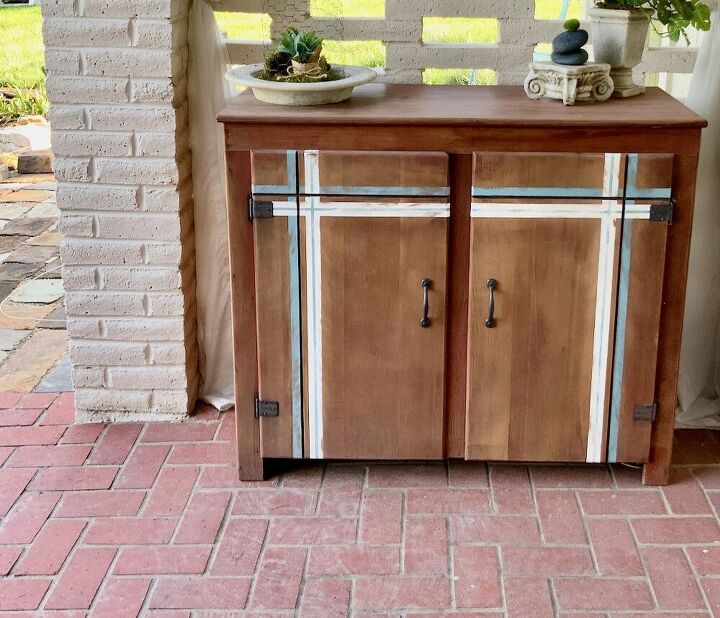




















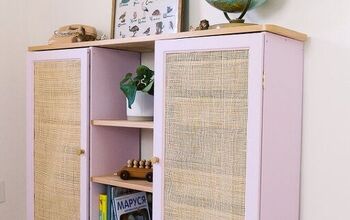
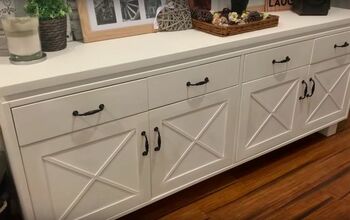
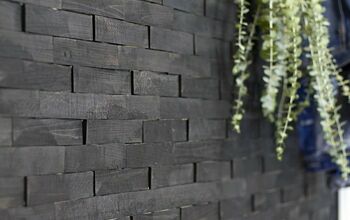


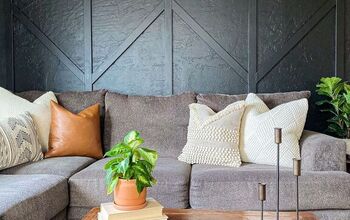
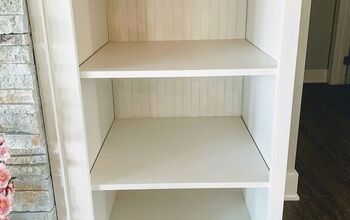



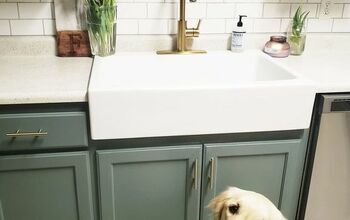
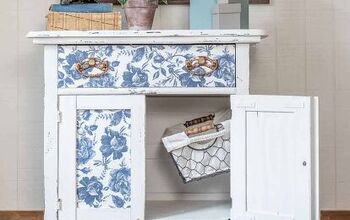


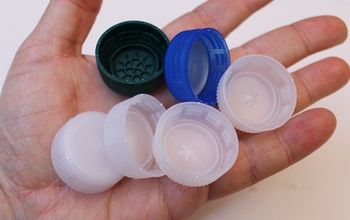
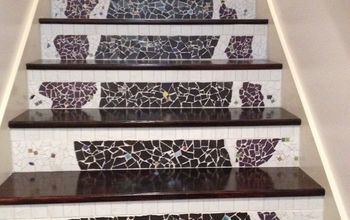

Frequently asked questions
Have a question about this project?